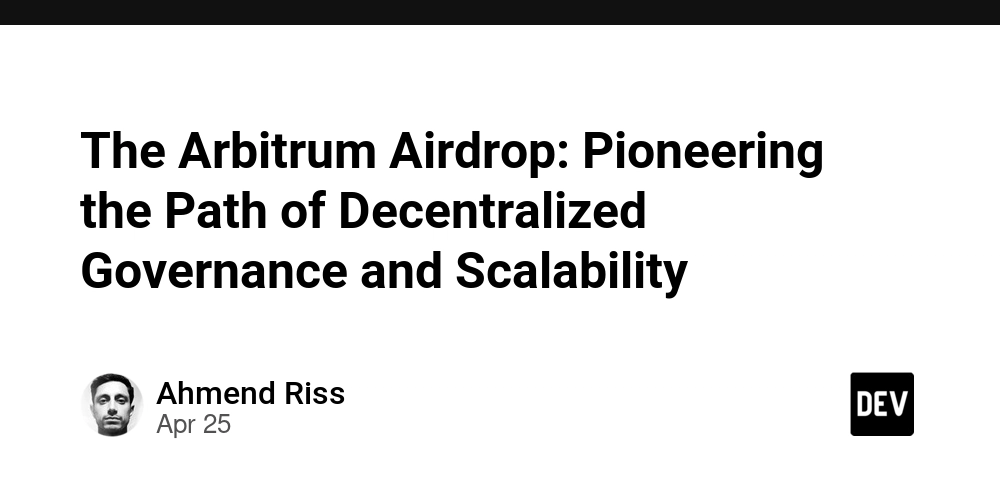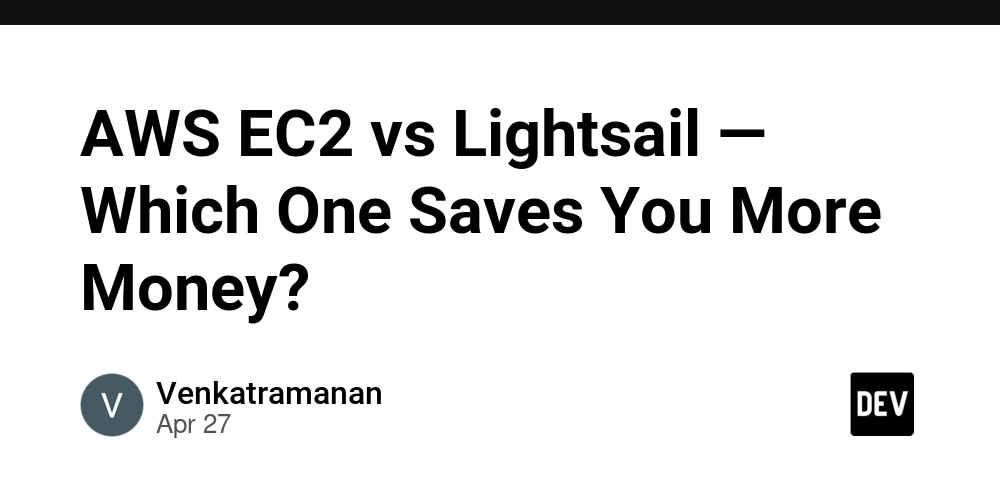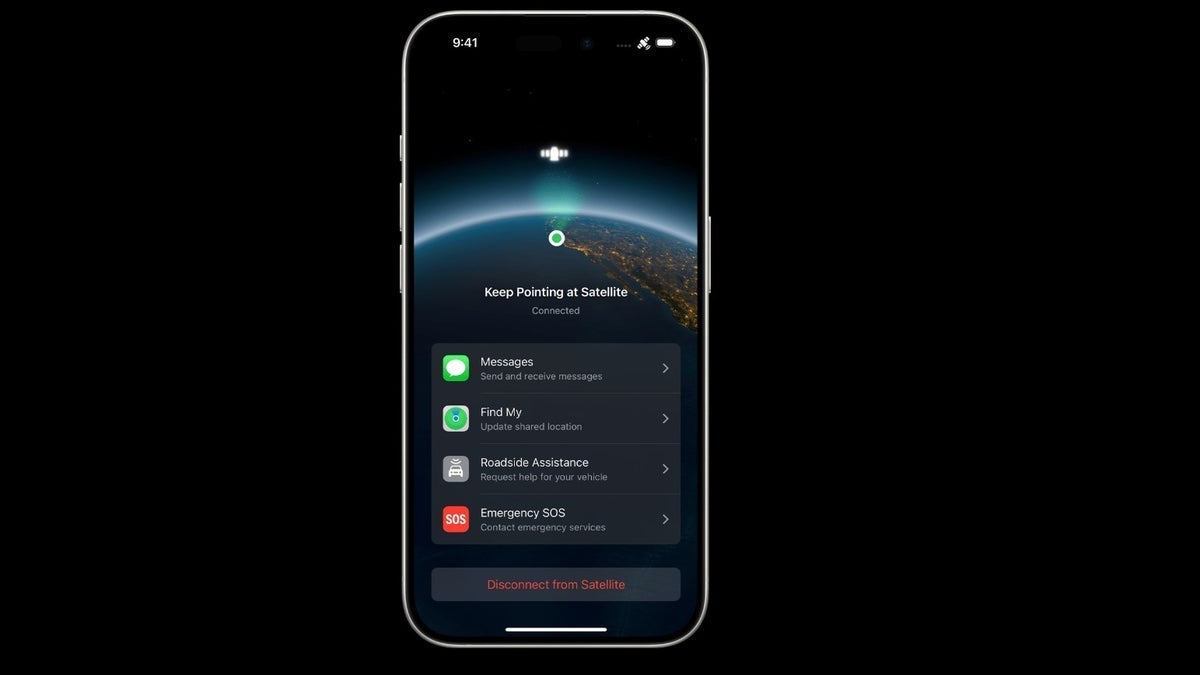The Arbitrum Airdrop: Pioneering the Path of Decentralized Governance and Scalability
Abstract This post explores the groundbreaking Arbitrum airdrop, a pivotal event that not only enhanced Layer 2 scaling on Ethereum but also advanced decentralized governance. We delve deep into the genesis, execution, and far-reaching impact of this initiative by Offchain Labs. By unraveling the core concepts, technical innovations, practical use cases, and future prospects, this article offers readers an analytical yet accessible perspective on blockchain scalability and community-driven decision-making. Key topics include decentralized governance, tokenomics, smart contracts, and the role of airdrops in shaping dynamic crypto ecosystems. Introduction The blockchain space is in constant evolution, with new events increasingly driving technological improvements and community engagement. One event that has captured the attention of enthusiasts and developers alike is the Arbitrum airdrop. As a prominent Layer 2 solution for Ethereum developed by Offchain Labs, Arbitrum has redefined how decentralized governance and scalability can coexist. In this post, we will provide a comprehensive analysis of the airdrop, discussing its background, execution, and implications for the future of blockchain technology. A strong understanding of decentralized governance, token distribution, and Layer 2 scaling is crucial for grasping the significance of this event. Our discussion also emphasizes how tokenomics and community engagement stir a more participatory crypto ecosystem. Background and Context Blockchain technology has revolutionized digital trust by enabling secure, transparent transactions. The advent of Ethereum introduced smart contracts, but its scalability limitations soon became apparent. Consequently, Layer 2 solutions were developed to address challenges such as high transaction fees and network congestion. The Need for Layer 2 Solutions Ethereum’s blockchain has witnessed issues around slow transaction speeds and rising costs. This gave birth to scaling solutions like Rollups, which bundle multiple transactions to improve throughput. Arbitrum is one of the prominent solutions in this space, offering: Reduced fees Faster transaction speeds Enhanced reliability For a deeper understanding, explore this comprehensive explanation of what is blockchain. Genesis of the Arbitrum Airdrop The strategic airdrop was not merely a token giveaway; it was a calculated move to reward early users and invite wider participation in the platform’s governance. The distribution of ARB governance tokens was based on historical engagement metrics, emphasizing fairness and transparency. This method was designed to: Reward loyalty Incentivize community involvement Promote decentralization This innovative approach to token distribution sets the stage for a new era in decentralized finance (DeFi) and Layer 2 scaling. Core Concepts and Features The Arbitrum airdrop encapsulates several key technical and governance concepts, each playing a significant role in catalyzing the network’s evolution. Below is an overview of the essential features: Concepts and Tokenomics Layer 2 Scaling with Rollups: Arbitrum leverages rollups to aggregate transactions, offering improved speed and efficiency on the Ethereum network. Decentralized Governance: Distributing ARB tokens empowers community stakeholders, giving them a voice in decision-making. Transparency and Fair Distribution: The execution methodology hinges on historical interactions, ensuring that token distribution is perceived as equitable. Economic Incentives: Rewarding early adopters is intended to foster long-term engagement, creating economic incentives that drive network activity. Feature Table: Arbitrum Airdrop Key Metrics Feature Description Benefit Layer 2 Rollups Aggregates multiple Ethereum transactions into one Enhances scalability and speed Decentralized Governance Enables token holders to participate in decision-making Empowers community exchange Tokenomics Distribution based on historical usage Rewards loyalty Transparency Clear and fair airdrop system implemented by Offchain Labs Builds trust Scalability and Cost Reduction Reduces transaction fees for users Lowers economic barriers These core features illustrate how the Arbitrum airdrop is a merging point of technical innovation and decentralized community governance. Integration with Existing Ecosystem Arbitrum’s development is deeply intertwined with other ecosystem innovations such as smart contracts, DeFi protocols, and NFT marketplaces. For insights on Arbitrum’s tokenomics and decentralized governance, additional reading on NFT governance can be beneficial. Applications and Use Cases The successful implementation of the Arbitrum airdrop opens the door to numerous practical applications, demonstrating how community engagement and Layer 2 scaling can benefit the broader bloc

Abstract
This post explores the groundbreaking Arbitrum airdrop, a pivotal event that not only enhanced Layer 2 scaling on Ethereum but also advanced decentralized governance. We delve deep into the genesis, execution, and far-reaching impact of this initiative by Offchain Labs. By unraveling the core concepts, technical innovations, practical use cases, and future prospects, this article offers readers an analytical yet accessible perspective on blockchain scalability and community-driven decision-making. Key topics include decentralized governance, tokenomics, smart contracts, and the role of airdrops in shaping dynamic crypto ecosystems.
Introduction
The blockchain space is in constant evolution, with new events increasingly driving technological improvements and community engagement. One event that has captured the attention of enthusiasts and developers alike is the Arbitrum airdrop. As a prominent Layer 2 solution for Ethereum developed by Offchain Labs, Arbitrum has redefined how decentralized governance and scalability can coexist. In this post, we will provide a comprehensive analysis of the airdrop, discussing its background, execution, and implications for the future of blockchain technology.
A strong understanding of decentralized governance, token distribution, and Layer 2 scaling is crucial for grasping the significance of this event. Our discussion also emphasizes how tokenomics and community engagement stir a more participatory crypto ecosystem.
Background and Context
Blockchain technology has revolutionized digital trust by enabling secure, transparent transactions. The advent of Ethereum introduced smart contracts, but its scalability limitations soon became apparent. Consequently, Layer 2 solutions were developed to address challenges such as high transaction fees and network congestion.
The Need for Layer 2 Solutions
Ethereum’s blockchain has witnessed issues around slow transaction speeds and rising costs. This gave birth to scaling solutions like Rollups, which bundle multiple transactions to improve throughput. Arbitrum is one of the prominent solutions in this space, offering:
- Reduced fees
- Faster transaction speeds
- Enhanced reliability
For a deeper understanding, explore this comprehensive explanation of what is blockchain.
Genesis of the Arbitrum Airdrop
The strategic airdrop was not merely a token giveaway; it was a calculated move to reward early users and invite wider participation in the platform’s governance. The distribution of ARB governance tokens was based on historical engagement metrics, emphasizing fairness and transparency. This method was designed to:
- Reward loyalty
- Incentivize community involvement
- Promote decentralization
This innovative approach to token distribution sets the stage for a new era in decentralized finance (DeFi) and Layer 2 scaling.
Core Concepts and Features
The Arbitrum airdrop encapsulates several key technical and governance concepts, each playing a significant role in catalyzing the network’s evolution. Below is an overview of the essential features:
Concepts and Tokenomics
- Layer 2 Scaling with Rollups: Arbitrum leverages rollups to aggregate transactions, offering improved speed and efficiency on the Ethereum network.
- Decentralized Governance: Distributing ARB tokens empowers community stakeholders, giving them a voice in decision-making.
- Transparency and Fair Distribution: The execution methodology hinges on historical interactions, ensuring that token distribution is perceived as equitable.
- Economic Incentives: Rewarding early adopters is intended to foster long-term engagement, creating economic incentives that drive network activity.
Feature Table: Arbitrum Airdrop Key Metrics
| Feature | Description | Benefit |
|---|---|---|
| Layer 2 Rollups | Aggregates multiple Ethereum transactions into one | Enhances scalability and speed |
| Decentralized Governance | Enables token holders to participate in decision-making | Empowers community exchange |
| Tokenomics | Distribution based on historical usage | Rewards loyalty |
| Transparency | Clear and fair airdrop system implemented by Offchain Labs | Builds trust |
| Scalability and Cost Reduction | Reduces transaction fees for users | Lowers economic barriers |
These core features illustrate how the Arbitrum airdrop is a merging point of technical innovation and decentralized community governance.
Integration with Existing Ecosystem
Arbitrum’s development is deeply intertwined with other ecosystem innovations such as smart contracts, DeFi protocols, and NFT marketplaces. For insights on Arbitrum’s tokenomics and decentralized governance, additional reading on NFT governance can be beneficial.
Applications and Use Cases
The successful implementation of the Arbitrum airdrop opens the door to numerous practical applications, demonstrating how community engagement and Layer 2 scaling can benefit the broader blockchain ecosystem. Here are some key use cases:
Enhanced Governance Participation:
Community members who received ARB tokens can now influence crucial network decisions. This level of participation fosters a truly decentralized ecosystem, changing the way blockchain protocols are managed.Economic Incentives for Developers:
By aligning token distribution with network usage patterns, early adopters and developers are incentivized to continue building on the platform. This serves as a compelling model for grant and sponsorship programs within decentralized networks. For more insights on innovative funding approaches, consider reading articles such as Arbitrum and open-source in blockchain.Cross-Chain Interoperability:
As blockchain networks evolve, solutions like Arbitrum play a pivotal role in enhancing interoperability, which is crucial for the growth of multi-chain ecosystems. This integration not only reduces transaction fees but also improves the compatibility of various decentralized applications (dApps).Real-World Economic Engagement:
Consider a decentralized finance (DeFi) application where both staking and yield-farming protocols are integrated. With the ARB tokens distributed in the airdrop, users can vote on the allocation of community funds and the direction of future upgrades, ensuring that the project remains responsive to community needs.
Challenges and Limitations
Despite its many benefits, the Arbitrum airdrop is not without challenges and limitations. Here we analyze several technical and adoption-related concerns:
Technical Challenges
Network Congestion:
During the airdrop execution, network congestion posed significant challenges. Even with a Layer 2 solution, handling a massive influx of transactions can lead to temporary inefficiencies.Smart Contract Vulnerabilities:
As with any blockchain project, the risk of potential vulnerabilities in smart contracts exists. Rigorous audits and open-source contributions from the community are essential to mitigate these risks.Integration Complexity:
Merging traditional Ethereum functions with Layer 2 scalability solutions demands sophisticated technical integration. Developers must adapt to new paradigms that are not always backward compatible.
Adoption Challenges
Token Volatility:
Governance tokens often experience price volatility, raising concerns regarding long-term stability in decentralized governance models. This volatility can influence stakeholder behavior and decision-making.Inclusivity of Distribution Criteria:
Relying heavily on historical usage for token distribution may inadvertently exclude newer, enthusiastic participants. Balancing rewarding early adopters with inclusivity remains an ongoing challenge.Regulatory Uncertainty:
As decentralized platforms and token distributions gain prominence, regulatory frameworks continue to evolve. Future compliance requirements could impact the operations of platforms like Arbitrum.
Bullet List: Summary of Challenges
- Network congestion during peak demand periods.
- Potential smart contract security vulnerabilities.
- Integration complexity in bridging Layer 1 and Layer 2 functionalities.
- Volatility in token value affecting governance stability.
- Inclusivity concerns over distribution criteria and newer users.
- Regulatory uncertainties in a rapidly changing legal landscape.
Future Outlook and Innovations
The success of the Arbitrum airdrop highlights a significant trend in the blockchain ecosystem: the move toward community-driven governance and advanced scalability. Looking ahead, several trends and innovations can shape the future landscape.
Predicted Trends
Increased Adoption of Layer 2 Solutions:
With platforms like Arbitrum proving that enhanced scalability is achievable, more blockchain projects may adopt similar Layer 2 solutions. This shift could reduce transaction costs across the board and improve network performance.Expansion of Decentralized Governance Models:
As the airdrop empowers users to take part in decision-making, future projects might refine these models further, integrating more advanced consensus mechanisms. This evolution is likely to usher in more resilient and adaptive blockchain ecosystems.Enhanced Security Protocols:
In response to smart contract vulnerabilities and network congestion, we may witness an acceleration in the development of more robust security measures. Enhanced auditing tools and decentralized security frameworks could become the norm.Integration with Cross-Chain Projects:
Future innovations might see deeper integration between blockchain networks, facilitating smoother cross-chain interactions. This could lower the entry barrier for new projects and enhance interoperability across platforms.
Innovations on the Horizon
Tokenized Governance Model Enhancements:
Enhancements in tokenomics could provide dynamic voting power based on user engagement, staking periods, and community contributions. These developments could make governance more subtle and equitable.Collaborative Open-Source Funding:
Inspired by the airdrop, more initiatives may adopt decentralized funding models that incentivize sustained developer contributions. Articles from Dev.to have discussed how ethical and collaborative funding strategies might evolve, bolstering innovation across the industry.Smart Contract Upgrades and Audits:
Future projects will likely invest more heavily in periodic audits and upgrades to secure smart contracts. This trend will help mitigate vulnerabilities while ensuring scalability improvements remain intact.
Summary
The Arbitrum airdrop marks a significant milestone in the evolution of blockchain technology. It demonstrates how a well-executed token distribution can align economic incentives, empower community governance, and drive technological advancements in Layer 2 scaling. Though challenges—including network congestion, smart contract vulnerabilities, token volatility, and regulatory uncertainties—remain, the potential for innovative future developments promises a dynamic path forward.
Key takeaways from this analysis include:
- Decentralized Governance: Empowering users has redefined control over blockchain protocols by distributing tokens based on historical engagement.
- Layer 2 Scalability: Solutions like Arbitrum significantly reduce transaction fees and enhance processing speeds on Ethereum.
- Economic and Technical Challenges: While adoption and security challenges exist, continuous innovation and strategic governance models are expected to address them.
- Future Innovations: Trends such as enhanced governance models, improved smart contract security, and cross-chain integration are poised to drive the blockchain ecosystem into a new era.
For more detailed analysis on the Arbitrum airdrop and related topics such as Arbitrum future updates and the consensus behind transparency and network upgrades, please refer to the original article on License Token.
Additional Resources and Further Reading
Below is a bullet list of further resources for anyone wishing to dive deeper:
- What is Blockchain?
- Arbitrum Tokenomics
- NFT Governance
- Blockchain Scalability Solutions
- Arbitrum and Community Governance – an excellent resource discussing the mechanics behind decentralized decision-making.
- Arbitrum in the Open-Source Ecosystem
By examining these resources, you can gain a broader understanding of not only the Arbitrum airdrop but also the wider implications for blockchain scalability and community engagement.
Concluding Thoughts
The Arbitrum airdrop is more than a token distribution; it is a harbinger of a future where decentralized governance, advanced scalability, and community-driven development are at the heart of blockchain innovation. As more projects follow this model, users and developers alike will find unique opportunities to influence the technological trajectory and economic frameworks underlying these decentralized networks.
The journey ahead is filled with challenges, but the continuous innovation in smart contracts, scalable architectures, and robust governance models is paving the way for a more sustainable and inclusive blockchain ecosystem. This shift not only impacts financial applications but redefines how digital communities govern and interact in a transparent, secure, and incentivized environment.
In summary, the Arbitrum airdrop serves as an inspiring case study, illustrating that when technical innovation meets community empowerment, the result is a dynamic ecosystem ripe for unprecedented growth and creative breakthroughs. Stay tuned as this narrative continues to shape the future of blockchain governance and scalability worldwide.
Happy exploring and remember to stay informed about the latest trends in decentralized technology and open-source funding!






























































































































































![[The AI Show Episode 143]: ChatGPT Revenue Surge, New AGI Timelines, Amazon’s AI Agent, Claude for Education, Model Context Protocol & LLMs Pass the Turing Test](https://www.marketingaiinstitute.com/hubfs/ep%20143%20cover.png)



























































































































![[FREE EBOOKS] AI and Business Rule Engines for Excel Power Users, Machine Learning Hero & Four More Best Selling Titles](https://www.javacodegeeks.com/wp-content/uploads/2012/12/jcg-logo.jpg)












































































































































































































































![Hostinger Horizons lets you effortlessly turn ideas into web apps without coding [10% off]](https://i0.wp.com/9to5mac.com/wp-content/uploads/sites/6/2025/04/IMG_1551.png?resize=1200%2C628&quality=82&strip=all&ssl=1)




![This new Google TV streaming dongle looks just like a Chromecast [Gallery]](https://i0.wp.com/9to5google.com/wp-content/uploads/sites/4/2025/04/thomson-cast-150-google-tv-1.jpg?resize=1200%2C628&quality=82&strip=all&ssl=1)











![iPadOS 19 May Introduce Menu Bar, iOS 19 to Support External Displays [Rumor]](https://www.iclarified.com/images/news/97137/97137/97137-640.jpg)

![Apple Drops New Immersive Adventure Episode for Vision Pro: 'Hill Climb' [Video]](https://www.iclarified.com/images/news/97133/97133/97133-640.jpg)



































































































































